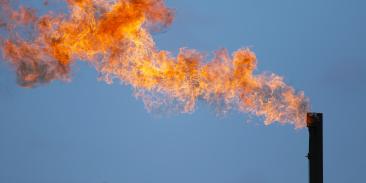Brazil’s Call to Action on Integrated Fire Management and Wildfire Resilience Elevates Wildfire as a Global Priority
EDF encourages accelerated action to enable the intended paradigm-shift in fire management.
Congratulations to all parties for putting wildfire at the heart of the international climate agenda. It’s long overdue and couldn’t be more timely. The Call to Action highlights many critical areas of work to accelerate and scale a paradigm shift in how the world approaches wildfire, which we believe is one of the defining challenges of our time. EDF looks forward to rolling up our sleeves together with the global fire community to speed up action and to stay ahead of rapidly changing fire regimes”. - Mark Moroge, VP of Forests, EDF
On the cusp of the Amazon climate summit, catastrophic wildfire emerged as the greatest driver of loss of intact tropical forests last year (WRI Global Forest Review, 2025). Globally, fire regimes continue to intensify at an alarming rate, faster than humanity or natural ecosystems can adapt. As a result, our current models for addressing fire are rapidly becoming ineffective. This is unsustainable and will result in ever-increasing greenhouse gas emissions along with growing threats to nature and communities.
EDF applauds COP30 President Brazil and the over 50 signatories to the Call to Action on Integrated Fire Management and Wildfire Resilience, announced yesterday in Belém. The Call to Action is a coordinated international response that builds upon the landmark G7 Kananaskis Wildfire Charter, announced in June by a number of fire-prone nations.
We are motivated by the Call to Action parties’ commitment to “advance a paradigm shift” in wildfire management and their acknowledgement that “wildfire risk is exacerbated by climate change”; EDF has advocated for countries to adopt such language, including through our statement on the G7 Kananaskis Wildfire Charter.
EDF is particularly encouraged by Call to Action signatories’ commitment to act in these areas:
- Empower and Include Local Actors: acknowledge the role of youth, women, Indigenous Peoples and local communities, including those of African descent, in nature stewardship, climate leadership, and fire management. Recognize that the increasing amplitude and magnitude of fires, driven by climate change and compounded by socio-economic dynamics, will disproportionately affect these groups and may be beyond what can be managed at the community level.
- Integrate Long-Term Fire Resilience into Investment Mechanisms: integrate, where appropriate, long-term fire resilience into broader development strategies and investment frameworks to maximize synergies of actions that address wildfire resilience and other development and environmental outcomes, including by leveraging multilateral funds, public–private partnerships, and innovative financial instruments such as the Tropical Forest Forever Facility (TFFF), taking into account the specific challenges faced by developing countries to support integrated fire management.
- Mainstream IFM in Climate, Biodiversity, Desertification and Disaster Risk Reduction Frameworks: integrate IFM into national climate and biodiversity strategies, such as Nationally Determined Contributions (NDCs), National Adaptation Plans (NAPs), National Biodiversity Strategy and Action Plans (NBSAPs), National Action Programmes (NAPs), National Disaster Risk Reduction Strategies, and other relevant national strategies, as appropriate.
- Promote and Strengthen Global and Regional Mechanisms: promote interoperable information services for wildfire monitoring and strengthen the Global Fire Management Hub and regional fire management networks and centers as voluntary platforms to connect, exchange and coordinate on data, training, science and cooperation, including with local mechanisms, while ensuring complementarity with other relevant initiatives.
These are essential elements of any playbook to deliver a paradigm shift in wildfire response. Action on other fronts is also urgent and imperative to deliver this shift.
According to the recently published 2024-2025 State of Wildfire comprehensive report, last year’s fire season represented the 6th highest fire-related carbon emissions on record, with an estimated over 100 million people exposed to wildfire impacts (and multiples more indirectly through exposure to poor air quality, with such communities exposed to air quality 13-60% below World Health Organization Standards), and an estimated over US$215 billion in damages to physical assets worldwide.
Until we deliver a global paradigm shift in fire response, we can expect more of the same impacts to life, property, nature, and climate. Over the last two decades, there has been an approximate 40% increase in the extent of forest fires, and the intensity of globally extreme fires has doubled. (Jones et al., 2024a;Cunningham et al., 2024a). Current models project that the type of extreme events which led to 2024-2025 fire season impacts in South America will become 34-57% more frequent under medium-high climate change scenarios by 2100.
However, there is hope: models also suggest that strong climate action can significantly limit increases in extreme fire events. A paradigm shift in fire management will require a ten to hundredfold increase in the scale of fire prevention and speed of response. This paradigm shift must deliver “resilient reductions” that limit GHG emissions and community and ecosystem damages by preventing wildfires before they start and quickly extinguishing most wildfires while they are still small and manageable. This will be made possible by building highly capable governance and fire management institutions and by harnessing new technologies and predictive modelling. At the same time, proactive and year-round strengthening of ecosystem and community resilience must be advanced in strategic landscapes, to reduce the risk of fire spread alongside threats to life and property and damages to ecosystem services and biodiversity values. The goal is to successfully enable societies around the world to get out in front of the escalating impacts from rapidly changing fire regimes.
In EDF’s view, immediate opportunities to accelerate action towards this paradigm shift, consistent with and building upon priorities signaled in the G7 Kananaskis Wildfire Charter and COP30 Call to Action on Integrated Fire Management and Wildfire Resilience, include:
- Advance cutting-edge fire science: Improving research, situational analyses, and predictive modelling capabilities to better assess fire risk, forecast fire starts and fire spread, and more effectively identify – and manage for – ecological and climate values at risk, including ecosystems with the greatest carbon stock potential and biodiversity value.
- Harness emerging fire tech: Evaluate the opportunities to leverage emerging real-time, high-fidelity data on fire starts and fire spread from satellite constellations such as the Earth Fire Alliance’s FireSat and CanadaWildfireSAT, and mainstream this within decision-support structures at the national, subnational and local levels.
- Incorporate economic analyses to inform fire policy, plans and finance: Conduct economic analyses that shed light on the full costs of wildfire events and costs of effective response across the five stages of integrated fire management: review and analysis, risk reduction, readiness, response to fires and recovery. Building on this information, complete dynamic cost-benefit analyses to help inform where scarce resources can be best deployed to optimize positive impacts for climate, people and nature.
- Unlock today’s fire finance while innovating for tomorrow’s: In the near term, this can include harnessing science and economics to inform effective rebalancing of existing public expenditures across all stages of fire management. According to recent global reports by UNEP, the OECD and the World Bank, spending on wildfire response is 30 times greater than on risk reduction, representing an opportunity for enhanced cost-efficiency of smartly-targeted interventions. Other near-term actions can include enabling eligibility for fire prevention and suppression activities, capacity-building and equipment provision under emerging forest climate finance instruments such as REDD+ results-based payments or the Tropical Forest Forever Facility. To achieve a paradigm shift in fire approaches, significant new financing must also be secured. EDF encourages exploration of instruments such as novel bond and insurance products, and ecosystem services mechanisms based on provision of water and clean air.
- Empowering and including local actors: New Woodwell Climate Institute/EDF analytics indicate that 41% of Indigenous territories across the Amazon are located within regions of very high or extreme wildfire danger. Supporting Indigenous Peoples – who collectively steward a large and significant portion of the entire Amazon Basin – to adapt historic cultural fire practices facing changing conditions, as well as to design technology, finance and policy solutions that are responsive to their priorities are key initial steps. We encourage policymakers and practitioners in Amazon countries and beyond to include Indigenous and Local Community counterparts as partners in the development of technical analyses, design of policy and financial instruments, and as key stakeholders in testing use cases for innovative remote sensing and aerial suppression technologies.
We congratulate signatories of the Call to Action on Integrated Fire Management and Wildfire Resilience. We further encourage parties and stakeholders to act now vis a vis the Call to Action. Such accelerated action should inform an agenda of continuous enhanced ambition, targets, and cooperation in the year ahead, such that the global community can rally around concrete progress towards achieving a paradigm-shift in wildfire during COP31 next year.
EDF is working with partners to advance these and other essential strategies to achieve a fundamental paradigm-shift in wildfire management, and we invite opportunities to strengthen collaboration and further support this agenda that is so essential for climate, people and nature.
With more than 3 million members, Environmental Defense Fund creates transformational solutions to the most serious environmental problems. To do so, EDF links science, economics, law, and innovative private-sector partnerships to turn solutions into action. edf.org
Latest press releases
-
Brazil’s call to action on integrated fire management and wildfire resilience elevates wildfire as a global priority
November 7, 2025 -
Electricity Bills Have Risen in 47 States, While Trump Administration Blocks the Cheapest, Cleanest Energy Sources
November 7, 2025 -
AGREE, EDF, and Rewiring America Secure Progress Towards Heat Pump-Friendly Electric Rates in Con Edison Rate Case
November 6, 2025 -
New Environmental Defense Fund Report Urges New York City to Take Unified Approach to Housing and Climate Crisis to Protect Communities from Future Displacement
November 6, 2025 -
EDF, Allies File Comments Urging the Trump EPA to Continue the Greenhouse Gas Reporting Program
November 3, 2025 -
Climate Workforce Summit by Ashoka University and EDF Sparks Cross-Sector Collaboration to Accelerate India’s Green Transition
November 1, 2025










